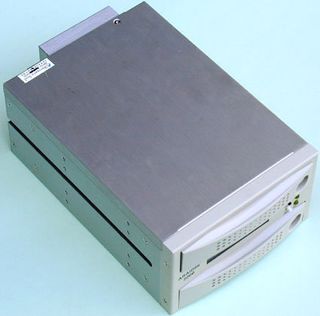Security with Ease: Accordance ARAID 2000
Guarding Against Hard Disk Failure

Despite all the progress in hard disk drive technology, even the most recent Serial ATA drives are not immune from sudden hardware failure. The main reason is that while most hardware components are entirely electronic, hard drives have important mechanical elements: a motor, actuators, heads and spinning platters.
Of course, this dual nature - combining electronic and mechanical parts - also applies to optical drives. But while a defect on a DVD drive surely can be annoying, it is not nearly as big of a problem as when a hard drive suffers a serious problem. (If you've ever seen the horrific messages sent by Windows or the BIOS in these cases, you know what we mean.) Often the result of such a failure can be quite shocking: the data is lost, and can only be restored by hiring expensive data recovery specialists like CBL or Ontrack.
The safest way to guard against data loss or significant system downtime is to employ redundant data storage, by putting the same data on multiple drives. These days, cost-effective RAID controllers and the use of identical drives can achieve this objective. Many controllers integrated into motherboards can handle the widely-implemented and simple RAID modes 0 and 1.
The RAID controller needs its own driver to operate RAID 1 in a secure and stable manner. The RAID array also needs to be configured at the start of setup. The ARAID 2000 was developed by Accordance to make installation as easy as possible for the user, and to enable the upgrade of an existing system to secure RAID 1. It provides a turnkey RAID solution that operates transparently within the system, making operation simple.
Stay on the Cutting Edge
Join the experts who read Tom's Hardware for the inside track on enthusiast PC tech news — and have for over 25 years. We'll send breaking news and in-depth reviews of CPUs, GPUs, AI, maker hardware and more straight to your inbox.
Current page: Guarding Against Hard Disk Failure
Next Page An In-Depth Look At The ARAID 2000Most Popular

